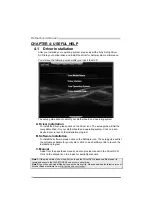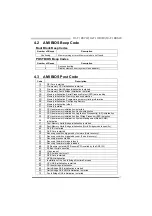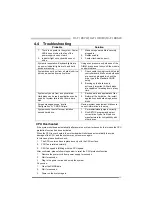
Hi-Fi Z87W/Hi-Fi H87W/Hi-Fi B85W
41
RAID 10:
RAID 10 combines the advantages (and
disadvantages) of RAID 0 and RAID 1 in
one single system. It provides security
by mirroring all data on a secondary set
of disks (disk 3 and 4 in the drawing
below) while using striping across each
set of disks to speed up data transfers.
Features and Benefits
Drives:
Minimum 4, and maximum is 6 or 8, depending on the platform.
Benefits:
Optimizes for both fault tolerance and performance, allowing for automatic
redundancy. May be simultaneously used with other RAID levels in an array, and
allows for spare disks.
Drawbacks:
Requires twice the available disk space for data redundancy, the same
as RAID level 1.
Fault Tolerance:
Yes.
RAID 5:
A RAID 5 array can withstand a single
disk failure without losing data or access
to data. Although RAID 5 can be
achieved in software, a hardware
controller is recommended. Often extra
cache memory is used on these
controllers to improve the write
performance.
Features and Benefits
Drives:
Minimum 3.
Uses:
RAID 5 is recommended for transaction processing and general purpose
service.
Benefits:
An ideal combination of good performance, good fault tolerance, and high
capacity and storage efficiency.
Drawbacks:
Individual block data transfer rate same as a single disk. Write
performance can be CPU intensive.
Fault Tolerance:
Yes.
Note1:
The RAID 0,1,10 and 5 functions are only supported by Z87 & H87 chipsets.
Note2:
For more details settings about Intel® Rapid Storage Technology (Intel® RST), please visit
http://www.intel.com/p/en_US/support/highlights/chpsts/imsm
















































